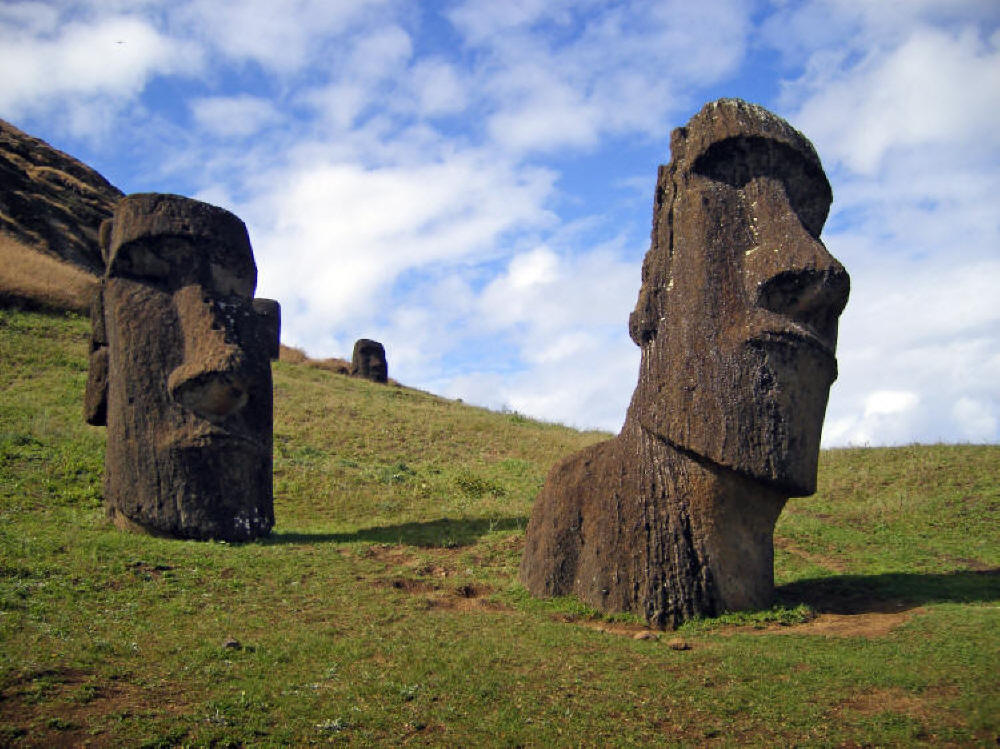
Easter Island's famous stone heads look upward to the stars.
The stone head sculptures of the Olmec civilization of the Gulf Coast of Mexico (1200 BCE - 400 BCE) are amongst the most mysterious and debated artefacts from the ancient world. The most agreed upon theory is that, because of their unique physical features and the difficulty and cost involved in their creation, they represent Olmec rulers.

5 amazing giant stone heads around the world Wanderlust
The massive stone head was apparently carved with its eyes wide shut, but where they open the head would be looking towards the sky. The size of the monolith can be calculated thanks to the man sitting on top of the head and a car that's located next to it. Padilla wanted to find the massive head at all costs and set out on a journey to do so.

a stone head with sunglasses on it's face is shown in front of a gray
The stone heads were part of a pantheon of great kings, amongst whom he was one, of course. How big? The heads were once part of statues that stood 8-9 metres high. They now sit scattered around the site. Young Mao statue, Changsha (Shutterstock) 3. A young Mao Zedong, Changsha, China

Stone Moai Head Statue Garden Ornamnents
Over half a century ago, deep in the jungles of Guatemala, a gigantic stone head was uncovered. The face had fine features, thin lips and large nose and its face was directed up at the sky. Unusually, the face demonstrated Caucasian features which were not consistent with any of the pre-Hispanic races of America.

Antiques Atlas Carved Stone Head
San Lorenzo Colossal Head 4, now at the Museo de Antropología de Xalapa. The Olmec colossal heads are stone representations of human heads sculpted from large basalt boulders. They range in height from 1.17 to 3.4 metres (3.8 to 11.2 ft). The heads date from at least 900 BC and are a distinctive feature of the Olmec civilization of ancient Mesoamerica.
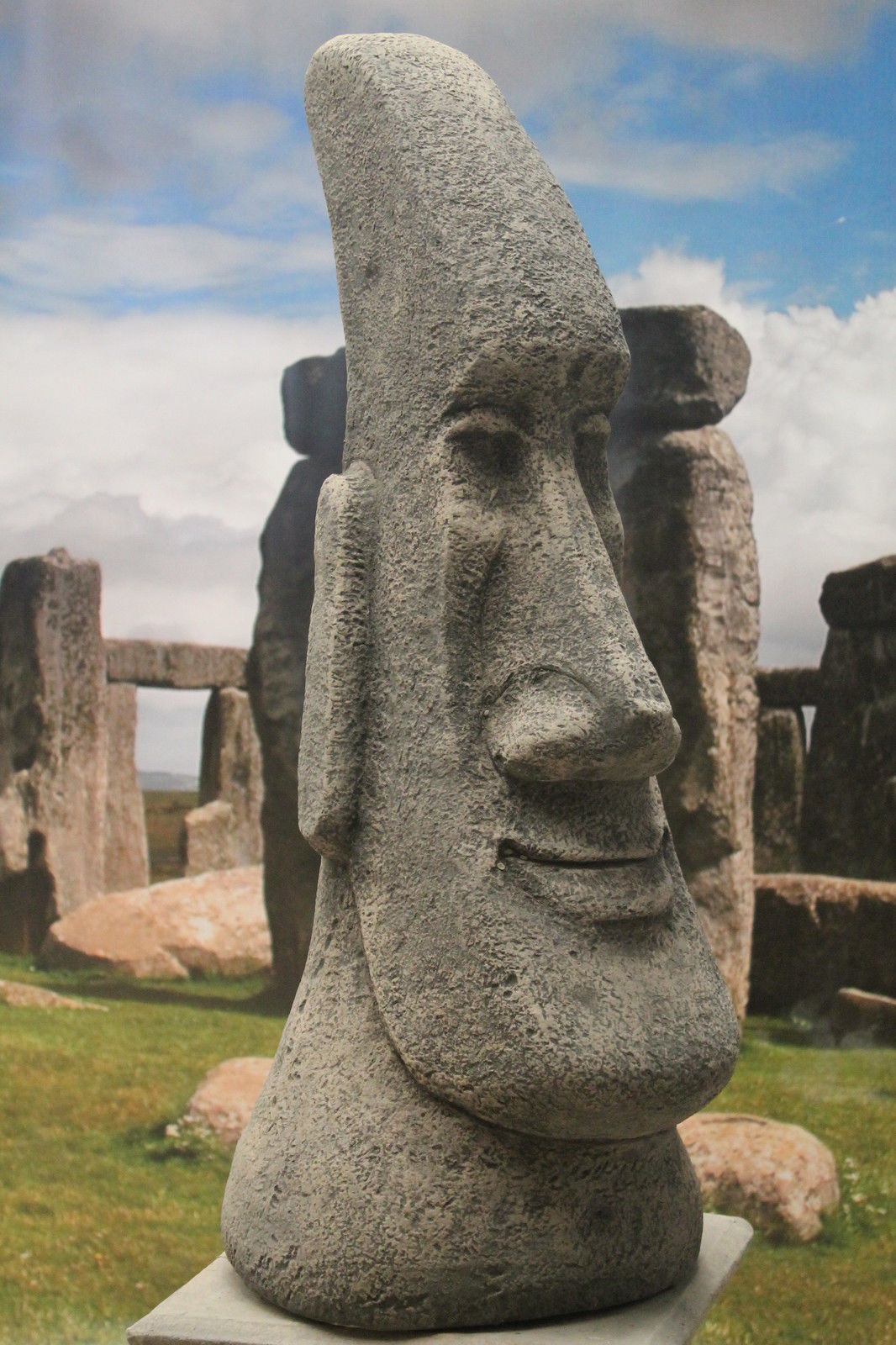
Large Easter Island Head Stone Garden Ornaments & Garden Statues in UK
Moai or moʻai ( / ˈmoʊ.aɪ / ⓘ MOH-eye; Spanish: moái; Rapa Nui: moʻai, lit. 'statue') are monolithic human figures carved by the Rapa Nui people on Rapa Nui (Easter Island) in eastern Polynesia between the years 1250 and 1500.
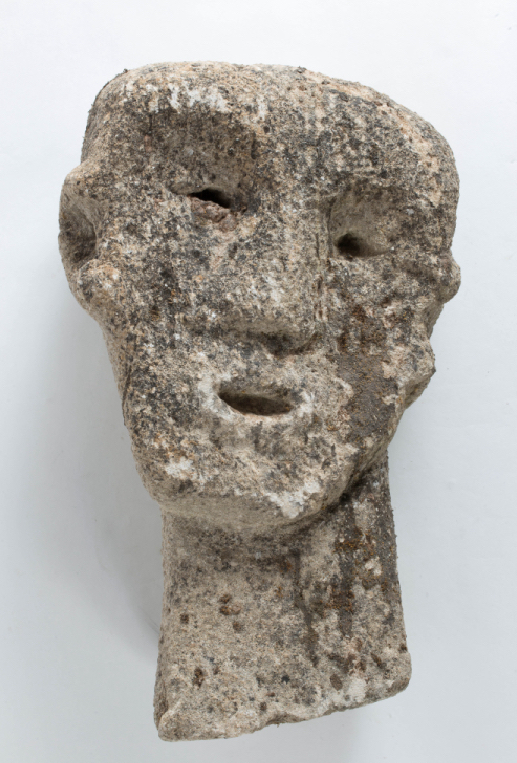
81 Stone Head North East Wales Heritage Forum
The heads range in size, and the tallest is about 9 feet tall and 14 feet in circumference. They weigh about eight tons, but they aren't uniform. Each of the Olmec Colossal Heads have distinct facial features, and several are wearing head coverings that depict talons or jaguar paws.
Hawaii, Oahu, Museum, Stone Stock Photo
There are 17 known Olmec colossal stone heads, the last one discovered in 1994. 10 were uncovered at the site of San Lorenzo, 4 at La Venta, 2 at Tres Zapotes, and one at the small archaeological site of La Cobata in the state of Veracruz. Outside these 17 heads there has been discovered in Takalik Abaj, Guatemala, an altar stone that may have.

The Olmec Stoneheads. Historum History Forums
Tiki MOAI Warrior Stone Head in 3D - Black with Black - 2 inch Trailer Hitch Cover - Hawaiian Style Hibiscus Cupid Love (316) $ 39.99. Add to Favorites 1PCS,Natural Tiger Eye Stones Animal Jewelry Making,30x35mm,Drilled Carved Wolf Head Shape Healing Accessory Findings (4.5k) Sale Price $5..

5 amazing giant stone heads around the world Wanderlust
An Olmec colossal stone head in basalt from San Lorenzo, c. 1200-400 BCE. Although all wear the hat or headdress worn during war and the Mesoamerican ballgame, each of these massive heads has unique features which suggests they depict specific Olmec rulers. In this example the head has unexplained drilled dimples which are also seen in some of the other heads.

Antiques Atlas Carved Stone Head
The Olmec are known for the immense stone heads they carved from a volcanic rock called basalt. Archaeological evidence also suggests that they originated the Mesoamerican practices of the Mesoamerican Ballgame—a popular game in the pre-Columbian Americas played with balls made from solid rubber—and that they may have practiced ritual bloodletting.
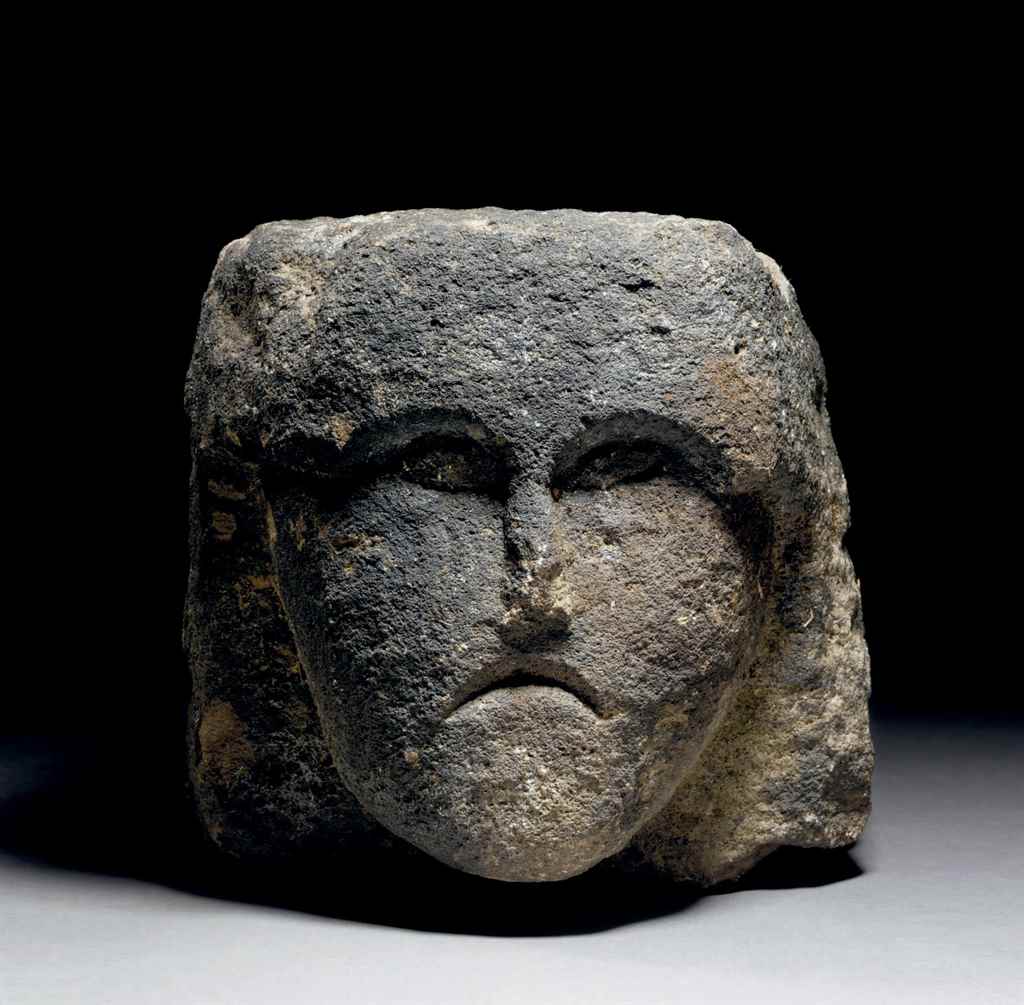
A Celtic Stone Head, circa 2nd1st century B.C. Celtic art, Celtic
Illustration. by Dennis Jarvis. published on 19 March 2014. Download Full Size Image. An Olmec colossal stone head in basalt from La Venta, c. 1200-400 BCE. Although all wear the hat or headdress worn during war and the Mesoamerican ballgame, each of these massive heads has unique features which suggests they depict specific Olmec rulers.

Ancient British Celtic Iron Age Stone Carving of a Human Head, 50 BC
Stonehenge's Function and Significance. For centuries, historians and archaeologists have puzzled over the many mysteries of Stonehenge, the prehistoric monument that took Neolithic builders an.
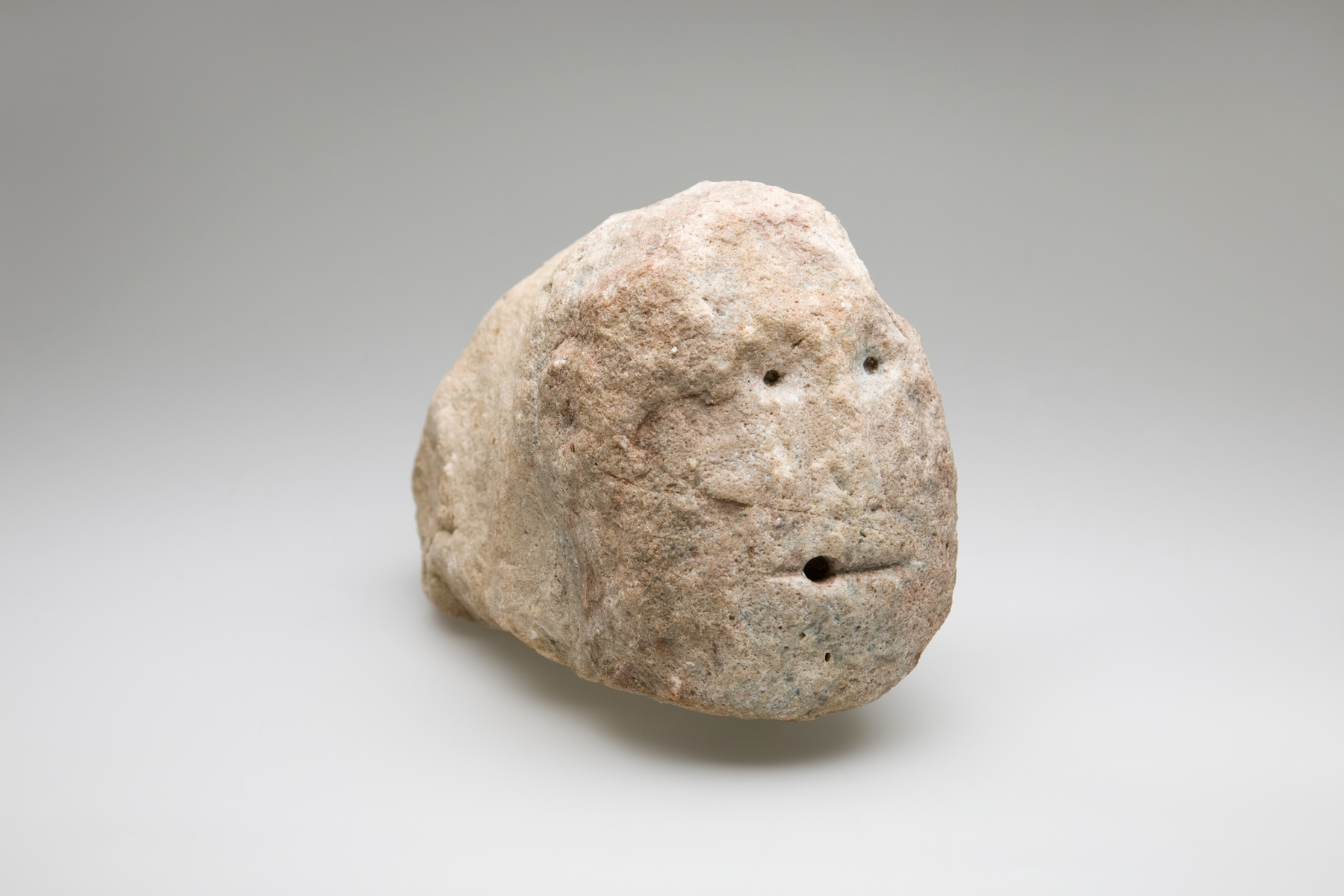
Stone Head Monaghan County Museum
The Olmec Colossal Heads. The Olmec's colossal sculpted heads show the head and face of a helmeted man with distinctly indigenous features. Several of the heads are taller than an average adult human male. The largest colossal head was discovered at La Cobata. It stands about 10 feet tall and weighs an estimated 40 tons.
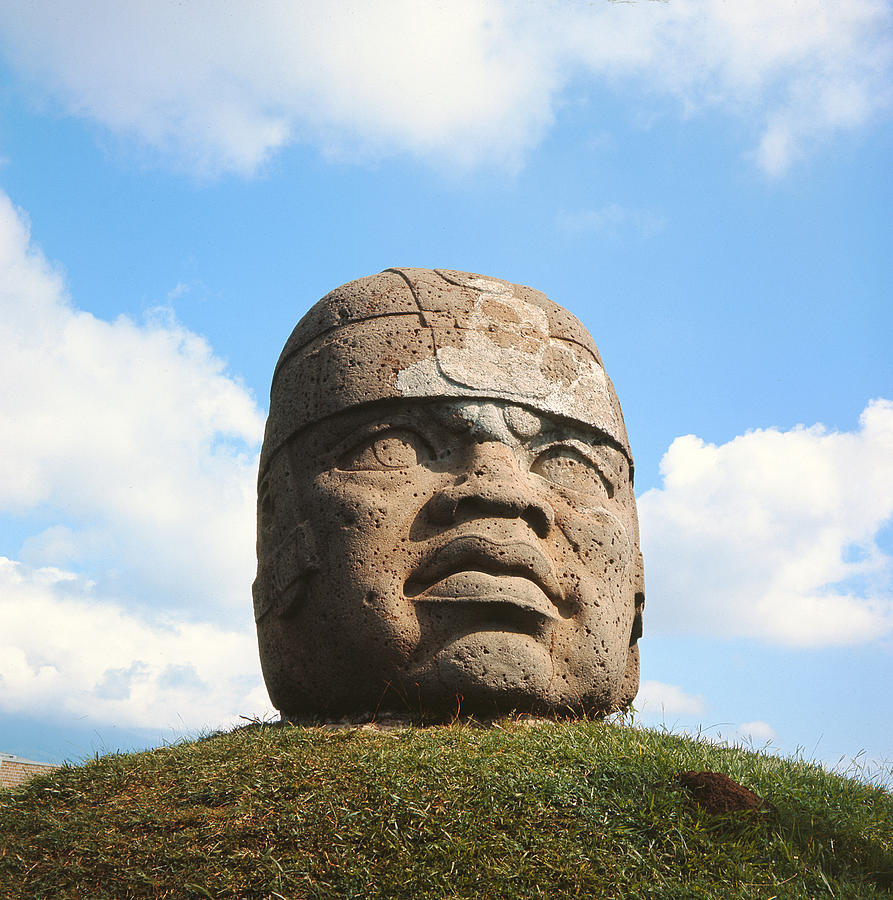
Rattlesnake effigy (34.7 x 34.4 x 35.2 cm), Mexico no date available on
The Armadillo Head was the first of the three stone heads to have been found by local farmer Sebastián Sam. The Human Head measures 50 by 50 centimetres (20 by 20 in). It was the second stone head to be discovered at Chojolom. The Deity Head is the largest sculpture, measuring 1.1 by 1.4 metres (3.6 by 4.6 ft).

Carved Stone Head from Corleck Hill, Ireland Stone carving, Face
The stonework is made of many different types of stone, including basalt and jadeite. Only a handful of Olmec woodcarvings remain, busts excavated from a bog at the El Manatí archaeological site. The cave paintings are found mostly in mountains in the present-day Mexican state of Guerrero. The Olmec Colossal Heads